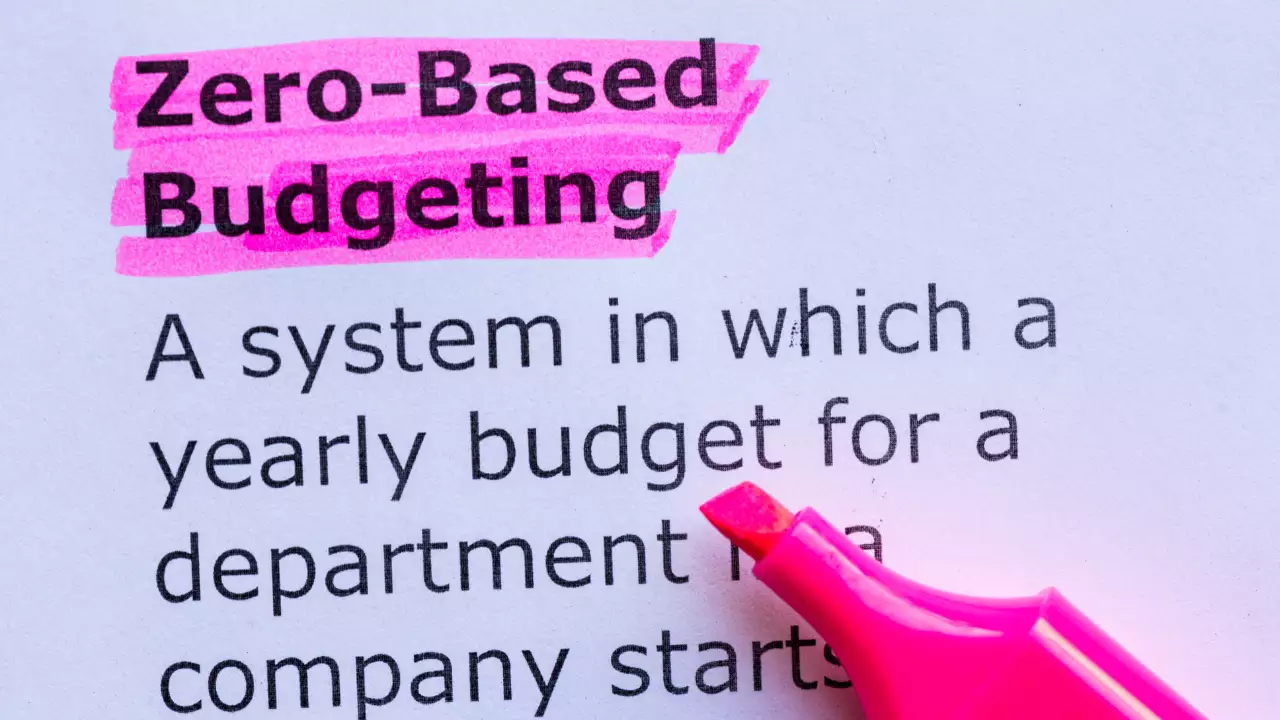Zero-based budgeting (ZBB) is a budgeting approach that requires justification and prioritization of all expenses during each new budget period rather than relying on previous cycles.
By starting budgets from “zero” and scrutinizing every proposed line item expenditure before allocation, ZBB aims to boost financial efficiency, savings, accountability, and strategy alignment.
While rigorous, implementing zero-based budgeting properly unlocks many benefits that typically outweigh extra upfront efforts. This comprehensive guide examines ZBB concepts, methodology, best practices, advantages, challenges, and lessons learned to inform readers considering applying zero-based budgeting.
What is Zero-Based Budgeting?

Zero-based budgeting fundamentally differs by requiring all expenses proposed freshly equaling targeted income levels every period. Rather than adjusting old budgets, budgets start zero analyzing spending priorities justified again.
Key Attributes Include
- Justifying Costs – Rather than rollover inertia, conscious evaluation validates each expense’s contributing value.
- Ranked Priorities – With finite income, expenditures get ranked by importance then funded accordingly.
- Increased Efficiency – Bloated spend gets challenged through evidence-based evaluation.
- Enhanced Savings – Eliminating unjustified expenses automatically boosts potential savings.
Here are the 5 Steps to Zero-Based Budgeting:
Whether used managing household finances or applied professionally as CFO, establish zero-based budgeting through:

1. Set Financial Goalposts
Outline organizational performance and target metrics guiding decisions. These typically cover:
- Income – Revenue for personal or business finance planning
- Savings – Percentages or values for wealth building
- Debt – Ideally loans get eliminated then avoided
- Investments – Asset returns fuelling growth from surplus capital
- Sustainability – Keeping spend balancing long-run with income
Well-defined goalposts mark approved directions judged against.
2. Detail All Cost Elements
The grunt work involves scrutinizing and detailing all known regular expenditure items across operating categories like:
- Wages
- Office rentals & equipment
- Sales, general & administrative overheads
- Raw materials/inventory
- Capital expenditure maintenance etc.
Tedious yet Necessary! Also project upcoming once-off replacement buys.
Document expenses at granular levels assigned specific budget owners responsible for justifying value. Use previous periods as references only; not templates limiting imagination.
3. Rank Spending Priority
With expenses compiled, budget owners must rank each line item by relative importance towards achieving financial goalposts.
Categorize into:
- Fixed essentials – Unavoidable e.g. rent
- Variable essentials – Fluctuates e.g. inventory
- Discretionary nice-to-haves – Deferrable e.g. staff lunches
This logical ranking outlines justifiable priorities if forced cutting expenses elsewhere. Defend positions through operational impact discussions.
4. Allocate Budget Funding

Using ranked priorities matching expected monetary resources, allocate funding down the list until income gets depleted.
- Essentials receive guaranteed funding to continue existing (albeit potentially improved) operations
- Discretionaries only receive budget once essentials funded, if excess income allows
The priority system determines what gets included, excluded or reduced replacing previous untested assumptions.
5. Continual Optimization
Rather than annual torture, adopt zero-based budgeting as a rolling quarterly rhythm. This ingrains financial analysis strengthening decision muscles and data routinely.
Ongoing even minor tweaks compounded keep expenses consciously aligned with authorized spending levels. Interrogating low priority expenses often surfaces new savings and innovations too.
Zero-Based Budgeting Best Practices

Successfully implementing zero-based budgeting relies on several best practices to overcome common challenges:
- Define objectives clearly – Outline specific financial outcomes guiding evaluations and priorities for the budgeting period.
- Identify cost drivers – Understand factors causing expenses to fluctuate in categories. This informs savings opportunities.
- Maintain budget control – Manager accountability for meeting ranked funding allocations is vital for budget integrity.
- Incentivize properly – Ensure management incentives align with completing rigorous budgeting processes annually.
- Enhance business partnering – Finance collaborating with operations in priority setting and cost analysis provides mutual benefits.
- Utilize supporting technology – Specialized software helps manage heavy data demands efficiently for sizable organizations.
Advantages of Zero-Based Budgeting
Mastering zero-centered budgeting philosophy creates many financial and operational advantages:
Financial Upsides
- Guaranteed cost control
- Maximized savings rates
- Built-in expense auditing
- Confusion proofing budgets
- Data-driven decisions
Operational Benefits
- Objective spending analysis
- Promotes innovations
- Identifies performance improvement opportunities
- Instills financial accountability
- Ties budgets directly to organizational goals
Addressing Zero-Based Budgeting Challenges

While advantageous overall, zero-based budgeting has some inherent challenges to address:
- Time and Resource Intensive – Developing annual budgets fully from scratch requires more data gathering, analysis, and justification.
- Goal Conflicts – Short term cost cutting may compromise longer-term investments.
- Rigidity – Stringent funding control limits flexibility responding to unexpected events.
- Change Resistance – Managers often oppose perceived bureaucracy and accountability pressure.
Mitigation tactics include:
- Automate data collection with financial systems.
- Phase over multiple years by function.
- Allow exceptions process for unforeseen events.
- Train extensively on mindset and process.
Conclusion
Zero-based budgeting is a rigorous yet rewarding budgeting approach aligning expenses tightly to strategy and priorities. The upfront effort delivers deep savings and insights unimaginable within incremental budgeting.
While requiring change management finesse, organizations mastering continual justification and value-based funding allocation better weather financial storms through conscious cost control rather than arbitrary cuts. The proof of zero-based budgeting success shines through in the results. Financial efficiency indeed enables strategy.